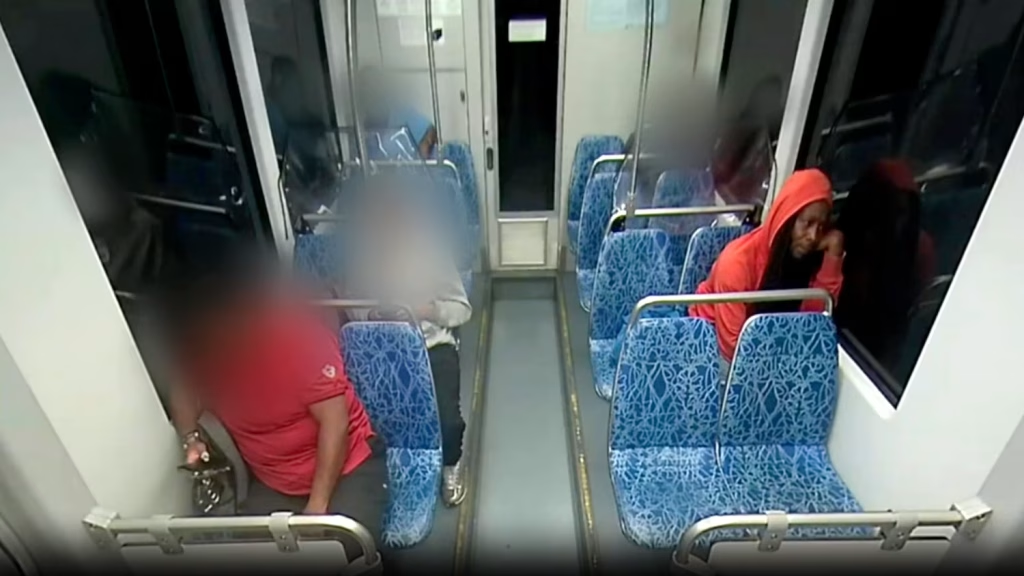The headline facts
On the evening of 22 August 2025, Iryna Zarutska, a 23-year-old Ukrainian refugee living in Charlotte, North Carolina, was fatally stabbed while seated on the city’s LYNX Blue Line light rail train, specifically inside a train car. Police say the attack was unprovoked, describing the incident as a tragic stabbing in which an innocent woman was targeted. A 34-year-old man, Decarlos Brown Jr., stabbed Zarutska and was arrested days later and charged with first-degree murder. Zarutska died as a result of the attack. The case has ignited a national debate in the US about transit safety, mental health, homelessness, and the basic promise of refuge for people fleeing war. The rise in violent crime and crime on public transportation has made this case a focal point in the criminal justice conversation.
Who was Iryna Zarutska
Friends and local reporting describe Iryna as creative, soft-spoken and determined to rebuild her life after Russia’s full-scale invasion upended her family’s future. She graduated from Synergy College in Kyiv with a degree in Art and Restoration. She grew up in Kyiv, left Ukraine with her mother and siblings to seek safety, and found work in Charlotte while planning vocational training as a veterinary assistant. She sketched and painted in her spare time. As a sister, Iryna played a supportive role in her family. Her father could not leave Ukraine due to wartime restrictions and, heartbreakingly, was unable to attend her funeral on 27 August.
On the night she was killed, Iryna was the victim of a violent attack after finishing a shift and boarding the light rail to go home. Newly released train surveillance video, which Daily Digest will not show due to its graphic nature, confirms there was no confrontation before the stabbing. She sat down, the suspect was behind her, and moments later he stood, produced a knife and struck.

The suspect and the arrest
Police identified the suspect as Decarlos Brown Jr., 34. Court records and local reporting point to a long history of arrests and documented mental illness. Brown also had a prior conviction for armed robbery and served a five year sentence in prison. Authorities arrested Brown on 28 August and charged him with first-degree murder. He is currently being held in jail, and his pretrial release was denied, despite the legal option of a written promise to appear. The U.S. Attorney for the Western District of North Carolina said on 8 September that federal authorities were reviewing possible additional charges, including for an act causing death, underscoring the seriousness with which officials are now treating violent crimes on public transport. There are growing concerns about violent criminals on public transportation and debate over the appropriateness of the death penalty in cases involving mental illness. Brown’s behavior was considered a medical issue, and he was evaluated at a local hospital after his arrest.
Why this case hit a nerve in America
The killing has become a flashpoint far beyond Charlotte. It has been seized upon by politicians and commentators across the spectrum, sometimes to criticise media coverage, sometimes to blame ideological opponents, and often to highlight the public outcry over horrible actions and horrible killings on public transit. North Carolina’s Governor Josh Stein said he was “appalled” by the footage, called for more officers on the beat and promised support for law enforcement staffing. Charlotte’s mayor Vi Lyles vowed transit-safety changes while also stressing the need to expand mental-health support, a stance that drew both praise and backlash. At the federal level, the U.S. Transportation Department said it was scrutinising the city’s safety response. The White House also issued a statement on the need to protect passengers and improve safety on the mass transportation system. Authorities have launched an ongoing investigation into the incident and the broader safety of the city’s light rail system.
Beyond politics, many Americans reacted to the elemental tragedy. A young woman crossed an ocean to escape a warzone and was murdered on a city train. That contrast has resonated across social networks, Ukrainian diaspora groups and refugee-support organisations. The light rail system in Charlotte has played a transformative role in the city’s development, but recent events have underscored the challenges it faces in ensuring passenger safety.
What we know about the journey that ended in Charlotte
Public profiles and interviews with neighbours paint a picture familiar to many recent Ukrainian arrivals. Iryna’s family split across borders to maximise survival and opportunity. She came to the U.S. with her mother and siblings and took hourly work while she rebuilt language skills and saved for training. Her father, bound by Ukrainian mobilisation rules and personal duty, remained in Ukraine. When Iryna was laid to rest in Charlotte, he watched from afar. The victim’s family expressed deep suffering over their loss and called for justice, highlighting the profound impact the tragedy has had on their lives. The family and community described her as “kind” and “creative”, with everyday ambitions and a simple aim to live safely.

What happened on the train
The Charlotte Area Transit System (CATS) released surveillance video on 5 September. The surveillance footage, which is video obtained by the media, provides more light on the sequence of events. The edited, multi-angle footage shows Iryna boarding at East/West Boulevard station, taking a seat near a carriage end, and the suspect sitting just behind. The suspect is seen on surveillance footage multiple times before and after the incident. There is no apparent exchange. Seconds later, he stands, moves his head in an unusual manner, brown pulled a knife, and stabs her several times. After the stabbing, brown exited the train at the next charlotte light rail station. The train was held until police and medics arrived. CATS says the operator followed protocol. We are not embedding the video here.
System questions: fares, staffing and mental health
In the days after the video release, Charlotte officials confronted three intertwined issues.
Fare and platform controls. Local outlets reported the suspect did not have a valid ticket, reviving debates over fare enforcement and platform access on the Blue Line. CATS pledged more inspections, upgraded validators and additional security personnel on trains and platforms.
Transit policing and staffing. City leaders said they would increase uniformed presence and accelerate hiring to restore public trust. The governor framed it bluntly as putting “more cops on the beat” to keep people safe. Maintaining safety on the light rail system and the broader mass transportation system presents ongoing challenges, especially as crimes on transit can impact public confidence and highlight the need for effective security measures.
Mental health** and the justice gap.** Prosecutors and city officials acknowledged gaps in how courts and services handle people with serious mental illness who also have violent histories. Advocacy groups warned against conflating homelessness or mental illness with violence while still pressing for better treatment pathways and closer supervision for repeat offenders.
Why this matters to UK readers
Britain has welcomed hundreds of thousands of Ukrainians since 2022. Many British readers know families like Iryna’s, splitting across borders and starting again in unfamiliar cities. Her killing in Charlotte is a reminder that “safety” is not a border stamp. It is the product of functioning systems, from transit design and policing to mental-health care and courts. When those systems fail, the most vulnerable people pay first.
In the UK, the discussion often centres on the Homes for Ukraine scheme, safeguarding, and integration into transport networks and night-time economies. America’s debate after Iryna’s death mirrors ours in scale if not detail. How much uniformed presence deters violence on trains. How to handle serial offenders with documented psychiatric conditions. Where civil liberties and public safety meet on camera-filled platforms.
The family left behind
The hardest detail is the simplest. Iryna’s father could not travel to Charlotte. He has not hugged his daughter since she left Kyiv. The funeral took place without him, because a war that began far away determined where he could stand to say goodbye. That fact sits at the centre of this story and is why the case has cut through the noise.
What happens next
Brown faces a first-degree murder charge in Mecklenburg County. Federal prosecutors are reviewing whether any U.S. charges apply, which could affect custody and sentencing exposure. CATS and city leaders have promised tangible changes to rail operations and security. For Iryna’s family, the Ukrainian community in Charlotte and refugees watching across the Atlantic, justice will be measured not only by a verdict but by whether her death leads to safer journeys for everyone who rides a train home from work.
Sources and further reading
-
People Magazine – Ukrainian refugee Iryna Zarutska fatally stabbed on Charlotte light rail
-
CBS News – Surveillance video shows fatal stabbing of Ukrainian refugee on Charlotte light rail
-
ABC News – Charlotte officials promise changes after refugee killed on city light rail
-
New York Post – Father of Ukrainian refugee killed on Charlotte light rail unable to attend funeral

